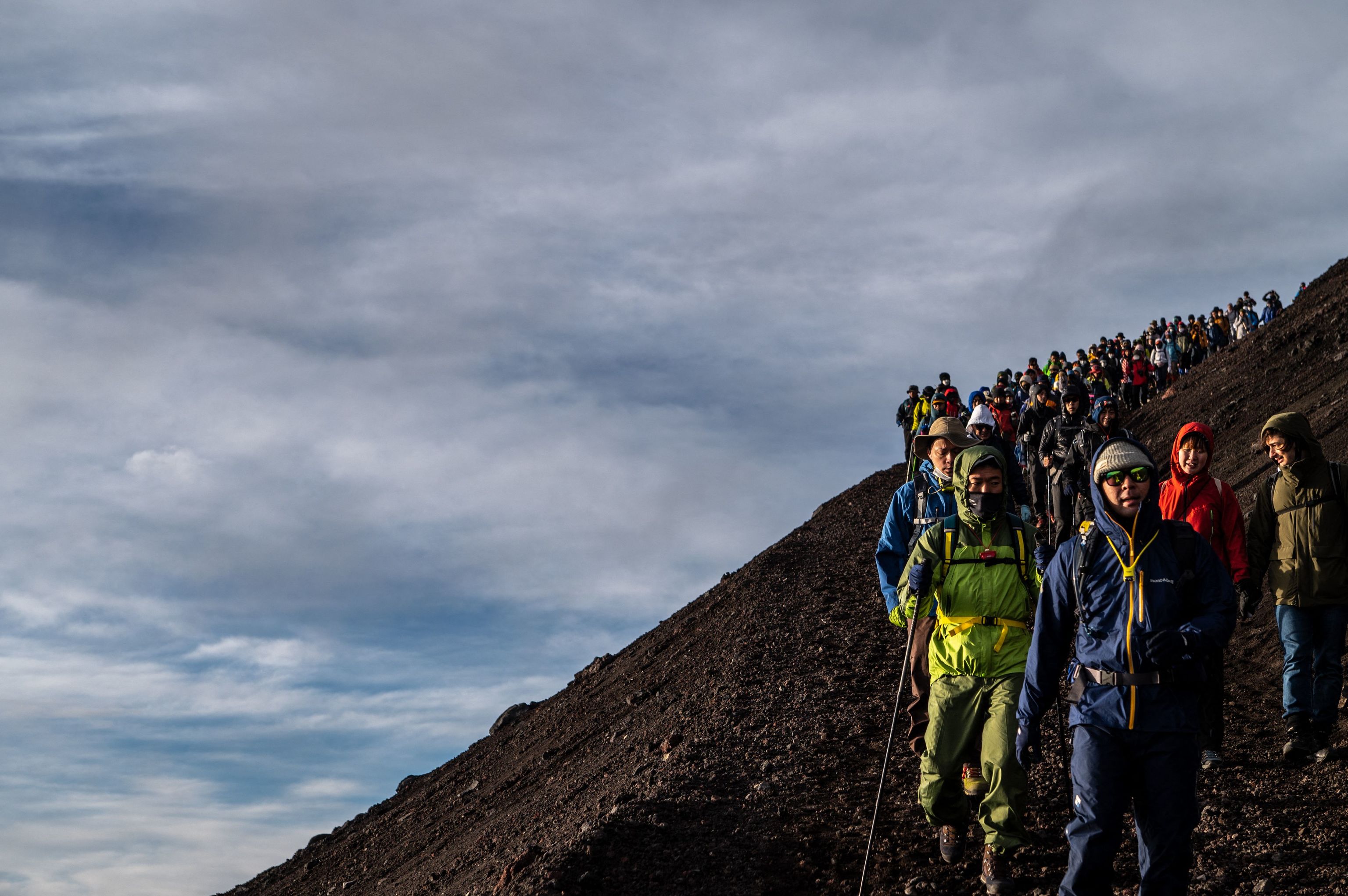When the Yamanashi prefecture authorities reopened the
Yoshida
trail , one of the four routes that climb to the top of
Mount Fuji
, on July 1 , thousands of pilgrims set out to climb the mountain which, at
3,776 meters
, is the highest in Japan.
It is the symbol of the country of the rising sun, it is also the symbol of the Buddhist and Shinto faith of its inhabitants.
The paroxysm and overcrowding reached its climax 10 days later, when the Shizouka prefecture, where the other paths that ascend to the top of the mountain run,
Fujinomiya, Gotenba and Subashiri
, authorized transit through them.
The four routes that reach the crater of the volcano had been closed in 2020 due to the
pandemic
that generated the coronavirus, thus allowing limited access for people in the summer of 2021.
After being closed for two years and with severe restrictions, the flow of applicants to step on the top of the volcano has reached unthinkable figures these days.
Since the reopening of the ascent paths, tens of thousands of people have undertaken the arduous climb.
Added to the anxiety triggered by the ban on climbing, is the brevity of a climbing season that only lasts
three months
.
The authorities do not offer data until the end of the season, although the flow of visitors that keeps the trails crowded predicts that all records will be broken.
According to data from the Japanese Ministry of the Environment, despite the restrictions,
78,548 people
climbed the mountain last year , approximately a third of 2019. Other sources point to seasons in which around
half a million
people have come.
The figures make
Fujisan the most climbed mountain in the world
.
Access to all routes will be closed on
September 10
.
After that date, climbing is prohibited.
The altitude of Mount Fuji makes it necessarily short, due to the difficult conditions that it registers since the end of summer, with abundant snow, cold and highly unstable weather conditions.
The goal of the Buddhist and Shinto
faithful
is to reach the top of Fujisan, the holiest mountain in Japan, something similar to the Muslim pilgrimage to Mecca.
The Japanese perform the rite at least once in their lives;
many do it dozens of times.
For this reason, the climbing routes are frequented by people of all ages and conditions.
The ascent of Mount Fuji has no technical difficulties.
The routes are wide paths that can be covered on foot: steps and handrails abound on the slopes.
This is not to say that reaching the top of this perfectly shaped stratovolcano is a piece of cake.
With more than
1,500 meters of altitude difference,
it is a considerable effort, and the altitude of the rim of the crater means that most of the pilgrims present symptoms of altitude sickness to a greater or lesser degree.
It is usual to undertake the ascent to Fujisan in two days.
The second is undertaken in the last part of the ascent in the middle of the night, with the aim of seeing the sunrise from the top of the volcano.
The so-called
stations
are used , which are distributed along the climbing routes.
In the hostels, Japanese-style high-altitude huts and in the
oshi no ie
(inns) the pilgrims take a break before the last climb.
Here you can buy the most varied products and articles.
Coffee and hot food machines, drinks, sunscreen,
trekking
poles , mountain clothing and even oxygen masks to mitigate the effects of hypoxia proliferate in these places, where snacks are served and it is possible to rest for a few hours.
Along the ascent there are plenty of stalls where you can also buy these items.
The measures to prevent the pandemic are added this season to the difficulties of ascension.
Aspiring to the top have to go through
health
checks to verify that they are negative in covid tests.
Both prefectures require a health certificate and, in addition, it is mandatory to take the temperature at the fifth station.
People who have 37.5 degrees Celsius or more must turn around, and those who pass the test receive a bracelet that certifies their good health and can continue with the climb.
The authorities have published a decalogue of obligations and recommendations that can be seen in many places.
In it, climbers are asked to make the reservation of the stations in advance since the number of guests has been reduced by half.
This has meant that until the end of the season there are practically no free places.
They recommend something quite difficult for this summer:
avoid crowds and close contact
with other people in crowded places, such as the top of the mountain.
Also carry all rubbish and human waste, such as vomit, that originates from climbing in airtight bags.
It is another rule that is followed to the letter by the mass of pilgrims who even come to collect the remains left on the mountain by tourists who also climb Fujisan.
The
use of the mask
is a prominent section in the decalogue.
Their use during the ascent is not a problem for a population as disciplined as the Japanese, accustomed to their use - above all out of respect for others - in any public place at the slightest symptom of lung disease, although they allow them to be removed during the climb.
Despite the added difficulty of walking uphill with it on, people who walk with their faces uncovered can be counted on the fingers of one hand, even if there is no one around them.
Conforms to The Trust Project criteria
Know more
Environment

